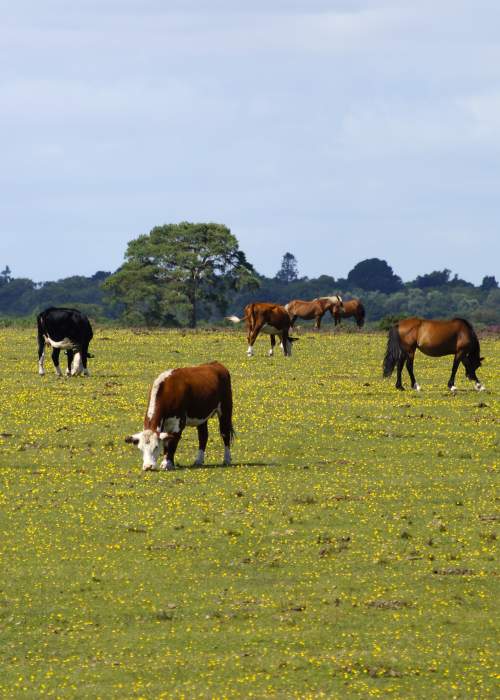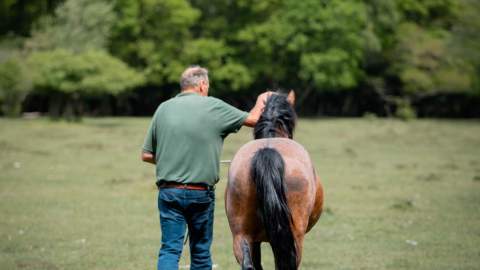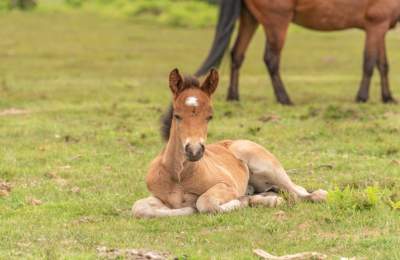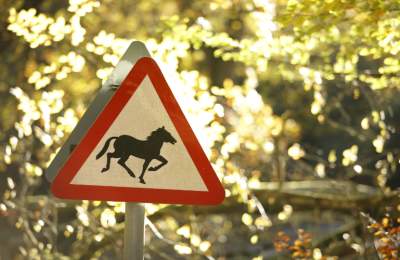Commoning in the New Forest
Commoning allows the heritage and history of the New Forest to live on in its traditional way of life that dates back to Medieval times, although was only made official in the mid-16th century.
The Common Rights of the New Forest are attached to properties and particular land in the New Forest, not individuals. There are 6 registers rights, these being Pasture, Mast, Marl, Turbary, Sheep and Fuelwood. Commoners of the New Forest are those who occupy land or property to which these privileges are attached. This includes the right to graze stock on the Open Forest.
Many commoners are descents of families who have been commoning for many generations. However, these days commoning doesn’t provide a living, commoners are now employed in other industries, some work for Forestry England whilst many others are employed in local businesses. Some commoners continue to turn out animals because they always have done so and they may also enjoy the social contact it provides, others have come into commoning simply for the interest it provides.
The Government does however recognise that the essential role that commoners play in maintaining the Forest’s landscape and ecology and the National Park Authority is committed to supporting commoning, therefore several incentives have been introduced which will assist commoners.
You will often see the New Forest ponies, donkeys and cattle grazing by the roadside or on our heathlands and this is why, many people think that these animals are wild when in fact they are all owned by our commoners. At present over 500 commoners exercise this particular right and graze more than 8,000 ponies, cattle and donkeys all year round.
Where can I learn more about commoning?
A great place to start is by a visit to the New Forest Heritage Centre in Lyndhurst. Step into a recreated cob cottage from the 1930s belonging to Harry Burt, a New Forest commoner. Hear you can learn about the traditional ways of life and the roles that commoners play in it.
How to do I find out if my land benefits from forest rights?
On request, the Clerk to the Verderers will carry out a search of the Forest Atlas to ascertain whether your property benefits from rights and if so, which ones. The Forest Atlas comprises seven large volumes of bound ordnance survey sheets, some dating from the early 1900’s. The detail of common rights was added to these plans after 1949 following the New Forest Act of that year. Prior to 1949, the rights were listed in a register dating from the 1857. In addition, a further set of Atlases exist showing the land which benefits from rights over the Adjacent Commons. These Atlases were produced following the 1964 New Forest Act. If rights were not claimed under the 1949 or 1964 Acts they are deemed to have been lost. Members of the public may view the Atlases during normal working hours but is assistance from the Verderers’ staff is required a fee will be charged. A fee will also be charged if a written search is requested.
Ways you can help by becoming a Forest-friendly visitor
The New Forest National Park is a wonderful place to visit and you can help it stay that way by being a Forest-friendly visitor.
For their safety and your own please leave the animals alone - although owned and cared for by local people called commoners, they are unpredictable and best treated as wild. Please don’t feed or pet them; there is plenty of natural food and it’s best that they don’t come to rely on people’s attention. They may look friendly but they can bite and kick, especially ponies with foals.
Find out more top-tips of being a Forest-friendly visitor by heading to our Caring for the Forest page and read the New Forest Code.
Some historic practises of commoning include:
 Mast/Pannage
Mast/Pannage
This is when pigs are realised/turned out across the New Forest, to allow the Pigs to snuffle the acorns covering the forest floors, which are in fact poisonous to cattle and ponies. Pannage takes place in the autumn season, usually around September, October and November.
The Right of Common of Mast is the right to turn out pigs in the pannage season. Pannage runs for a minimum of 60 days in the autumn. Commoners who turn out pigs in the pannage season may apply to allow a female pig who is in-pig (pregnant) to remain on the Forest after the season ends. Such pigs are known as privilege sows. They must return home at night and once they have given birth to their piglets they must go home and stay off the Forest. Pigs are extremely important to the Forest – they can eat acorns with no ill effects. Acorns eaten in excess may kill other grazing animals.
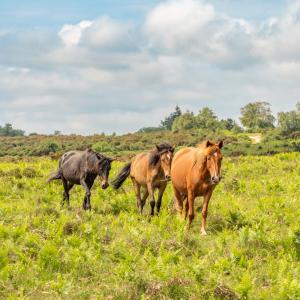 Pasture
Pasture
This is the right that the Commoners have to graze livestock upon the open forest in the area. This includes ponies, donkeys and cattle.
The Right of Common of Pasture is the most important right which permits the commoner to turn out ponies, cattle and donkeys onto the common grazing. Those who wish to exercise their Right of Pasture do so by application to the Verderers’ Clerk who will confirm the existence of the right and allocate a brand for the animals. Once they have been branded, the animals may be turned out upon payment of a marking fee which helps to finance the cost of employing the Agisters who are responsible for supervising the stock on the Forest.
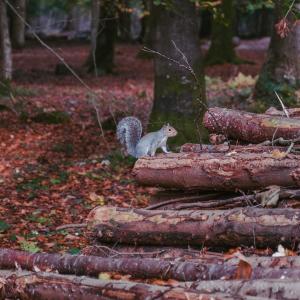 Fuelwood/Estovers
Fuelwood/Estovers
This is the right for the Commoners to cut wood for fuel. In need to protect the Ornamental and Ancient Woodland across the New Forest, the individuals who have the right to do so are provided with the firewood by the Forestry England.
The Right of Common of Fuelwood (previously known as Estovers) is the right that everybody wants! It means Forestry England is obliged to give the commoner some free fuelwood. There are only about 100 properties throughout the whole Forest whom Forestry England will allocate a number of cords of wood (a cord is a stack of wood 8ft long, 4ft high and 4ft deep).
Sheep
The Right of Common of Sheep permits the commoner to turn out sheep onto the Forest. There are very few sheep rights in the Forest and the right is rarely exercised these days.
Marl and Turbary
The Rights of Common of Marl and Turbary the right of marl permits the commoner to dig for a special type of clay that is used to improve agricultural land. The right of turbary is the right to cut peat for fuel. Neither of these rights are currently exercised.



